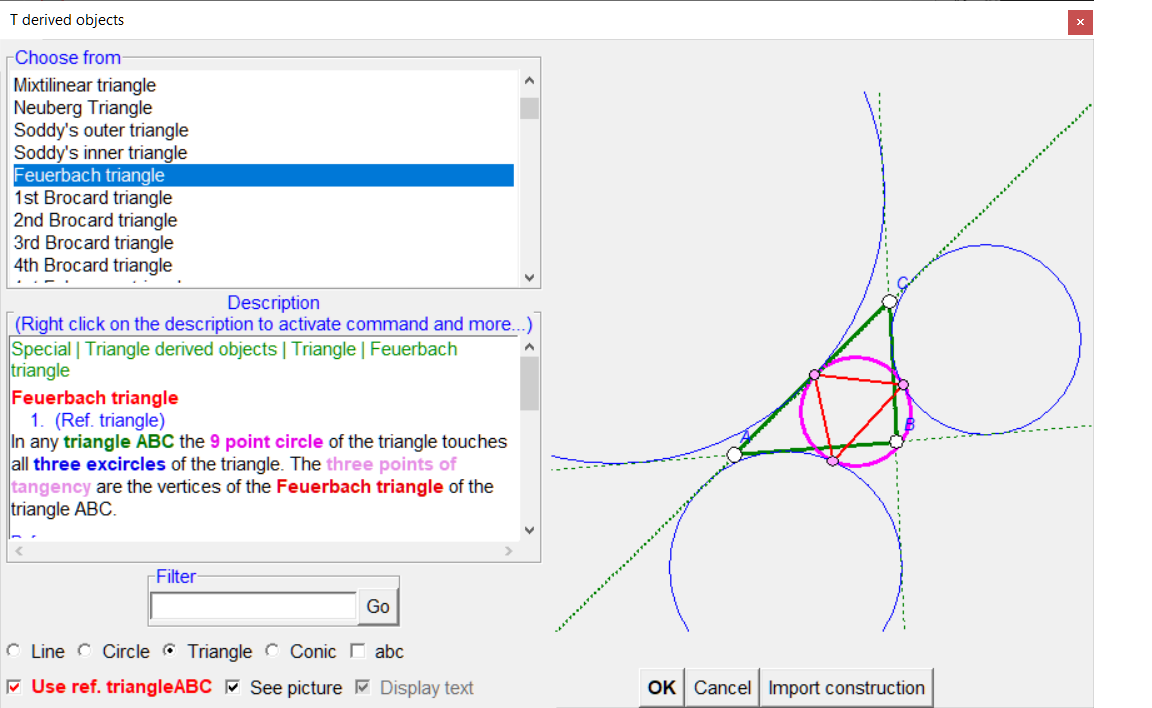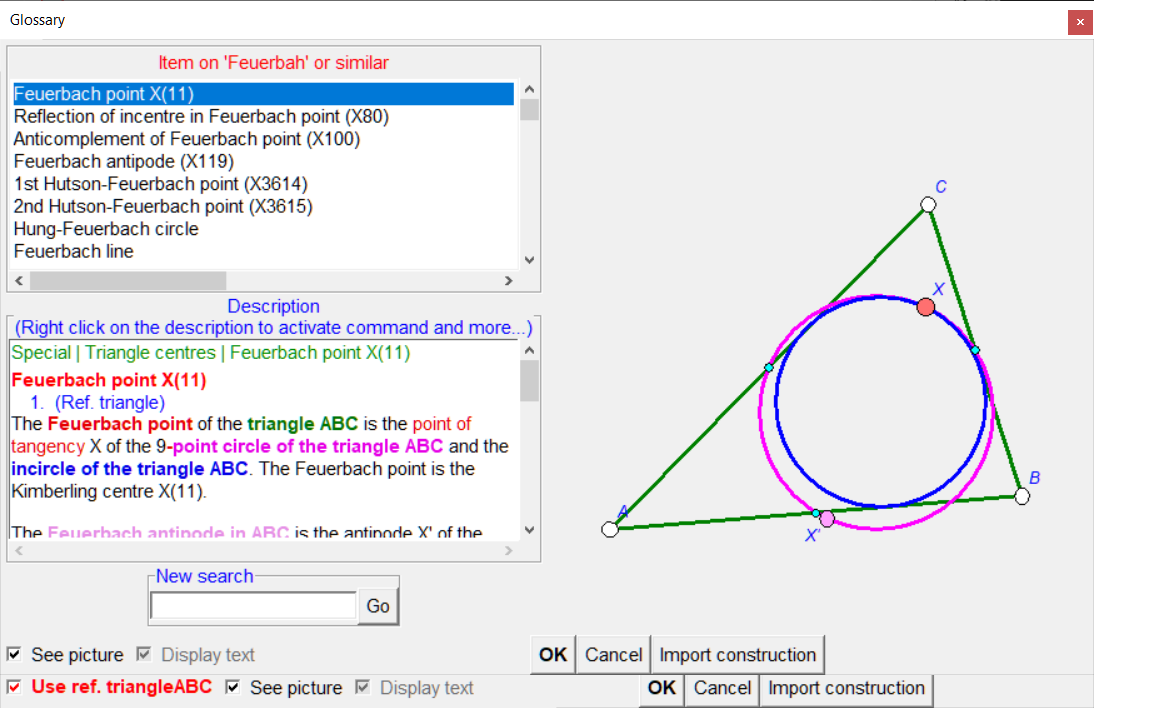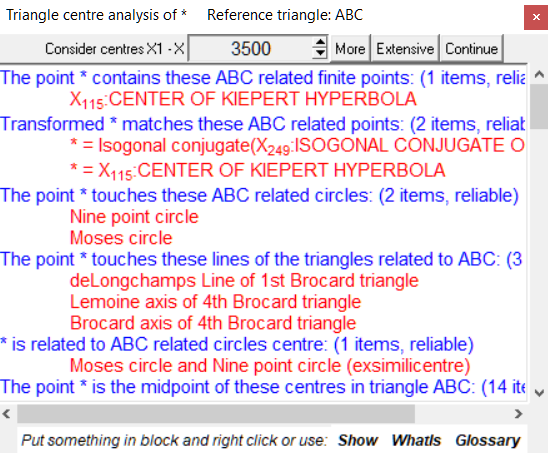Display triangle objects
Easy access to various triangle objects
Consider the following surprising fact about triangles:
Let A'B'C' be the Feuerbach triangle of a triangle ABC. Then the mirror images A'', B'', C'' of the Feuerbach point F in the sidelines B'C', C'A', A'B' of the Feuerbach triangle A'B'C' are collinear.
With a few clicks in OK Geometry, one can obtain an explanation of triangle objects, create a dynamic construction representing the fact and observe the configuration.
The Feuerbach point and the Feuerbach triangle are just two examples of the many triangle objects. Since triangle objects are used frequently in the study of triangles, it is useful to have quick access to them. For this reason, The Sketch Editor of OK Geometry includes a number of commands and command lists to make them easily accessible.
- The menu item Special|Triangle centres contains lists of many thousands of commands for triangle centres from the ETC (e.g., the Feuerbach point).
- The menu item Special|Triangle derived objects contains lists with several dozen of commands for characteristic triangle lines, circles, conics, and triangles (e.g. the Euler line, the nine point circle, Steiner's inellipse, the Feuerbach triangle).
- The menu item Special|TrianglePoint derived objects contains lists of several dozen of commands for triangle operations on a point in a triangle, giving as a result a point, a line, a circle, a conic, or a triangle (e.g., the isogonal conjugation, the trilinear polar, the Cevian circle, the pedal triangle).
- The menu item Special|TrianglePointPoint derived objects contains lists of several commands for triangle operations on a pair of points in a triangle, which give as a result a point, a line, a circle, a conic, or a triangle (e.g., the cross conjugate, the bicevian conic).
A further list of commands, grouped in the menu item Special|Various constructions, contains a list of various operations that are often used in triangle geometry (e.g. the similicentre of two circles, the orthology centre).
Although there are several thousand of triangle objects in total, you can easily find the right command for a particular object and also get the basic information of the object.
If you know what are the arguments of a sought command for a specific object, you select the appropriate menu item and the command from the corresponding list. The commands in a list can be sorted alphabetically or by frequency of use, and you can also use a search mechanism. For example:
We declare the triangle ABC under the study as the reference triangle. The Feuerbach triangle is determined only by the reference triangle and the result is of course a triangle. So we choose the menu item Special|Triangle derived objects, select the list of commands that create a triangle and click on the command Feuerbach triangle. To get a description and illustration of the concept, checkmark the See illustration box.

If you do not know the exact data of a triangle object, use the command Help|Glossary in the main menu or just press F1. You will get the list of all commands in some way related to the object you are looking for.
For example, you are looking for objects related to ... Feuerbah (note the typo!). The Glossary generates a list of all commands that contain something like 'Feuerbah' in the name or description of the command. You can also get the basic information about each concept (command) so that you can select the appropriate command.

OK Geometry also offers other ways to create and display triangle objects. To draw an object defined by the triangle centres (as numbered in ETC), use the command Special|Objects by triangle centres. If we fill in the input of this command with 115,(1,13),(2,4,7),(3,5,6,10,11), we create the triangle centre X115, the line through X1 and X13, the circle through X2, X4, X7, and a conic through X3, X5, X6, X10, and X11.

To create and display a point defined by its barycentric or trilinear coordinates, you can use the command Special|General triangle derived point.
You can also display triangle objects that are mentioned in the results triangle analysis results widget (see here). To display one or more objects from the widget, place them in a block and click the Show command in the widget.

.